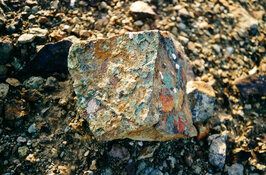So far this year, gold has continued the remarkable bullish rally it began in 2024, now up 25% and having reached all-time highs over US$3,400 per ounce (US$3,400/oz). The two biggest gold exchange-traded funds, the SPDR Gold Shares ETF (GLD:NYSE) and the iShares Gold Trust (IAU:NYSEARCA), have seen record inflows. Despite its performance, some market-related events suggest the yellow metal has lost some appeal as a safe haven asset, may be overvalued, may see more price consolidation, and may be upstaged soon by silver or platinum.
"Are we still in a bull market for now?" Barry Dawes, executive chairman of Martin Place Securities, asked hypothetically in a note after the gold price dipped to US$3,383/oz on June 18 in response to the U.S. Federal Reserve holding interest rates steady. He added that gold is "still vulnerable" and pointed out that two months have passed since its price peaked.
On news of the Fed's announced wait-and-see stance, Tai Wong, an independent metals trader, told Reuters on June 18 that "gold needs to reclaim US$3,400 for bulls to take firm control."
Signs of a Shift
Here are six indicators that gold's status quo earlier this year has been disrupted:
1) Citi lowered its gold price targets.
The recent surge in the gold price may indicate that "speculators have become overly bullish and complacent," that "goldbugs have become too optimistic," wrote Todd Campbell in a June 17 article for The Street. Citi expects investment demand for gold to fall off late this year and next year, possibly causing the gold price to fall to between US$2,500 and US$2,700/oz by year-end 2026.
In the interim, the bank expects a gold price between US$3,100 and US$3,500 in Q3/25, reported Campbell. It lowered its gold price target for six months out to US$3,300 from US$3,500 and for 12 months out, to US$2,800 from US$3,000.
Factors that could erode gold demand further, Citi noted, include fewer economic and geopolitical shocks, a better economic outlook, especially after new tax cuts, and easing economic tensions helping Treasury bonds slowly reduce gold's lead.
2) ETFs have seen outflows.
Investors have been exiting gold mining-related ETFs that track the overall performance of companies involved in the gold mining industry, "a sign that the high-flying sector's allure may be dimming even as prices for the precious metal remain strong," Geoffrey Morgan reported in a June 6 Bloomberg article. Despite being up 57% year to date as of June 18, the VanEck Gold Miners ETF (GDX:NYSEARCA) has had net outflows in each of the first four months of this year. The Sprott Gold Miners ETF (SGDM:NYSEARCA) saw outflows in May even as bullion prices set a record high.
According to the World Gold Council (WGC) on June 5, during May, global physically backed gold ETFs lost US$1.8 billion (US$1.8B) in the U.S., US$1.5B in North America and US$489 million in Asia, curtailing their five-month inflow streak. Despite this loss, total inflows have stayed positive so far for this year, at US$30B in the U.S.
"People are actually selling their shares of gold-mining ETFs into the rally," John Ciampaglia, Chief Executive Officer (CEO) and senior managing director at Sprott Asset Management LP, told Bloomberg. "We're not seeing new money, as a whole, come into the sector."
3) Gold did not react to a major geopolitical event.
When U.S. President Donald Trump called for Iran's "unconditional surrender" on June 17, the stock market went into a tizzy with the CBOE Volatility Index, or VIX, leaping to above 20, indicating heightened volatility, reported George Glover for MSN on June 18. Yet, investors' safe haven, gold, did not react to the chaos favorably like it normally would have. Rather, its price fell.
"Some analysts believe the precious metal is overvalued after a stellar run, so its recent drop could be a sign of things to come," Glover wrote.
He suggested the best strategy for investors right now might be to do nothing, to "hold their nerve and then ride the wave," he added.
4) Survey: investor gold sentiment is down.
A recent survey of global fund managers showed that investor gold sentiment has returned to "Goldilocks bull" levels before Trump's Liberation Day, due to abating trade war and recession fears, reported Scott Barlow, market strategist at The Globe and Mail, on June 17. Only 13% of managers surveyed by BofA Securities Strategist Michael Hartnett said gold will be the best-performing asset over the next five years; gold was beaten out by international stocks (54%) and U.S. stocks (23%). The No. 1 tail risk is still a trade war recession, but only 47% of respondents said so, down from 80% in April. Gold is the most crowded trade, 41% said, versus the long Magnificent 7 trade, 23% said.
5) China's gold market has started slowing.
In May in China, gold prices dropped slightly, gold ETFs saw their first outflows in months, and the gold futures market fell 27% month over month, reported Kitco News Crypto and Market Reporter Ernest Hoffman on June 17.
"The temporary tariff truce between China and the U.S. improved investor sentiment, evidenced by stronger equities, and the appreciating renminbi reduced the safe-haven demand for gold," according to Ray Jia, research head, China, at the WGC. "The weakening gold price momentum may have also discouraged investors."
These factors combined with seasonal weakness could lead to weaker gold jewelry consumption in the coming months, noted Hoffman.
"In the near term, easing trade tensions and gold price consolidation — should it continue — may further weigh on safe haven investment demand for gold," Jia added.
6) Gold has moved in a nontraditional manner.
Gold has been acting nontraditionally, its recent movement less aligned with Treasuries and the U.S. dollar and more aligned with Bitcoin, Sprott Asset Management CEO John Ciampaglia pointed out on CNBC's ETF Edge recently, the news channel reported on June 18. If that is the case, then gold needs to catch up, said Jan Van Eck, CEO of VanEck, an ETF and mutual fund company. This is because 37 million Americans have exposure to gold, whereas 50 million have exposure to Bitcoin, according to a recent survey.
"That makes a lot of sense to me, because people look at those as a store of value," Van Eck added. "And over the last couple of years, a lot of the appreciation has gone into Bitcoin."
Ciampaglia asserted that instead of gold, investors should be looking at silver and platinum because it is in those metals that the next big moves will occur in a precious metals bull market. Silver, he added, can slingshot past gold, and this may happen throughout the rest of this year. Gold no longer may be the best precious metals trade in a safe haven rally, reported the CNBC article.
The spot gold price on June 19 was US$3,373, down about US$14 from the day before.
| Want to be the first to know about interesting Gold investment ideas? Sign up to receive the FREE Streetwise Reports' newsletter. | Subscribe |
Important Disclosures:
- Doresa Banning wrote this article for Streetwise Reports LLC and provides services to Streetwise Reports as an independent contractor.
- This article does not constitute investment advice and is not a solicitation for any investment. Streetwise Reports does not render general or specific investment advice and the information on Streetwise Reports should not be considered a recommendation to buy or sell any security. Each reader is encouraged to consult with his or her personal financial adviser and perform their own comprehensive investment research. By opening this page, each reader accepts and agrees to Streetwise Reports' terms of use and full legal disclaimer. Streetwise Reports does not endorse or recommend the business, products, services or securities of any company.
For additional disclosures, please click here.





































